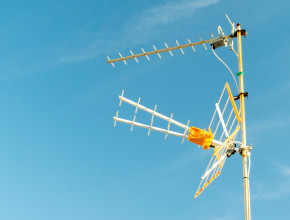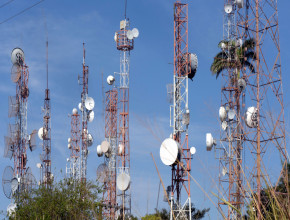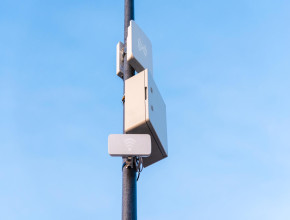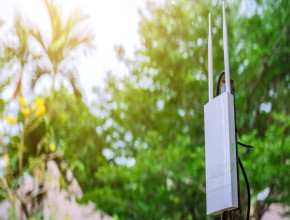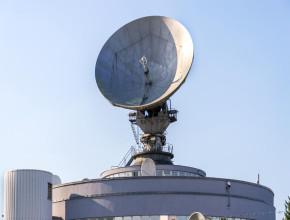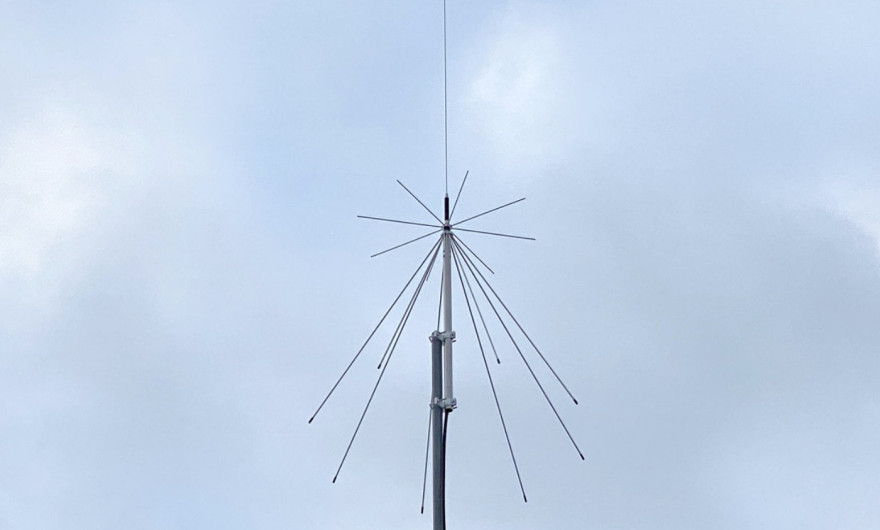
Discone antennas have been an primary option used for many radio communication applications for a long time. It is the version of a biconical antenna where one of its cones is replaced by a disc.
To brief you about the history of the discone antenna, it is great to know that, the first-ever discone was invented by Armig G. Kandoian on February 6, 1945. A few years of development made the dipole antenna even stronger with the ultra-high radio frequency technique.
By now, you must have understood a bit of discone antenna from a short introduction mentioned above. Let’s pay all our attention to the description, advantages, applications, and other necessary things you need to know about the military discone antenna!
What Is A Discone Antenna?
A discone antenna is a category of the biconical antenna where it is mostly mounted vertically with the disc at the top and the cone beneath. It is a specialized antenna with a gain similar to a dipole and offers a frequency ratio of up to 10:1.
The vertically polarized omnidirectional antenna is perfect for communications in the military, home, commercial, radio scanning and monitoring, and amateur radio applications.
It is manufactured using high-quality copper metal sheets and metal sheets or rods in a spoke configuration can also be employed to reduce wind pressure.
Composition And Design of Discone Antenna
Discone antenna constitutes a standing wave ratio of 1.5:1 over several octaves of frequency. It is considered the most useful for transmitting, scanning, monitoring, receiving, and jamming applications.
Take a glance at the following description of the composition and design of discone antenna:
-
The Disc
A discone antenna should have a disc with a diameter of 0.7 times a quarter wavelength of the antenna’s lowest frequency. It is located at the top of the cone and the antenna’s feed point is at the center of the disc.
Moreover, a 50-ohm coaxial cable is installed in the antenna where the center of the conductor is connected to the disc and the outer one to the cone.
-
The Cone
As understood from the name itself, the cone is an important component of a discone antenna. The length of a cone has a quarter wavelength of the antenna’s lowest operating frequency.
Also, the angle of the cone generally ranges from 25 degrees to 40 degrees which helps in making signal transmission effective.
-
The Insulator
The insulator acts as a separation between the disc and the cone. The disc and the cone need to remain separated and the insulator assists them perfectly to do so.
Dimensions of the insulator determine some of the antenna’s properties, especially for its high-frequency limit.
Advantages Of Discone Antenna
Discone antennas are crucially the most beneficial antennas due to their wideband frequency range and omnidirectional coverage. Have a look at the given below advantages and distinctive characteristics of wide band discone antenna:
- Wide Band discone antennas have an extremely narrow radiation pattern which is why these are very sensitive to distant signals.
- Since this antenna is an omnidirectional antenna, it can receive a wide range of frequencies from all directions and doesn’t need to be pointed toward the source of the signal.
- A discone antenna can also work indoors and receive signals without any interruption of walls or furniture in between.
- The fully welded discone antenna is specially designed to survive in extreme weather conditions.
- Its compact size, light weight, high efficiency, and low profile makes it ideally suitable for the measurement of vertical electric field intensity and spectrum monitoring over the frequency of 20 MHz to 500 MHz band.
- It is easier and more conveniently handled and is specially designed in a way that results in faster installation for every application.
- The most innovative and futuristic quality of this antenna is that it does not require any ground station connection.
Disadvantages Of Discone Antenna
There are pros and cons to every aspect, situation, and thing in this world. Likewise, if the discone antennas have tons of advantages, they come with some disadvantages as well.
Following are some of the cons of the discone antenna that you must consider while purchasing one:
- The discone antennas are no more used for transmitting. They are used mostly to receive signals.
- These antennas are more sensitive to higher frequencies so they usually pick up the higher ones and not the lower ones.
- Discone antennas are usually very massive and are difficult to be ported everywhere.
- As read above, these antennas are omnidirectional, they will receive frequencies from all directions and you are going to suffer the interface from every direction.
- It is not a very up-to-date antenna and requires the latest technological advancements and developments.
Applications Of Discone Antenna
The discone antenna has many advantageous and attractive applications, especially in the military, commercial, amateur radio, and radio scanner applications. It is also used for various frequency bands such as HF, VHF, and UHF communications.
The wideband discone antennas operate on a frequency range from 20 MHz to 6000 MHz. It can be used as a transmitting and receiving antenna with high efficiency to meet the broadband requirement of a base station antenna for ground-to-ground and ground to air communication applications. This happens even without having the requirement of multiple antennas.
A fully welded military discone antenna is highly suitable for oceanic applications, especially in arctic regions where vibrations and ice loading are the main concerns. The discone’s wideband nature allows it to broadcast undesirable emissions from faulty transmitters.
Conclusion
Well, you don’t have to be confused after getting to know all the advantages and disadvantages of the wideband discone antenna. Indeed, sometimes it is not used in indoor applications due to some obstacles. However, they transmit and receive in outdoor applications very powerfully and efficiently.
The wideband VHF and UHF discone antennas are extremely powerful and are made up of high-quality metals, usually copper. They have a high resistant capacity towards corrosion, especially in marine applications, and are highly suitable for long-distance transmissions.

